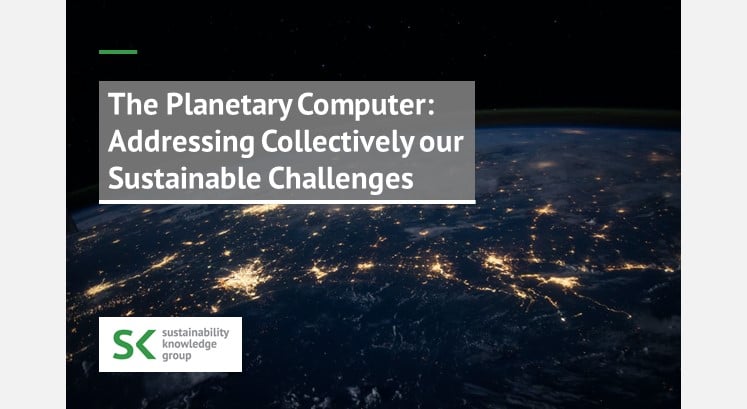Earlier this year, Microsoft announced its plans to become carbon negative by 2030. In addition, the company aspires to join other organizations, researchers, and governments to solve global environmental challenges by launching a “planetary computer.” The planetary computer is a new environmental initiative as part of its efforts to enhance the pace of sustainability solutions. It will use aggregated global environmental data to increase the collective efforts to protect biodiversity and conserve ecosystems around the world.
What is a Planetary Computer?
A planetary computer is a new complex type of primary computing platform that provides access to trillions of data points that people and machines collect, in the earth, sky and space. It enables users to search by geographic location instead of keywords, which makes them seamlessly transition to a new more holistic approach to finding answers to new complex questions.
Through artificial intelligence and machine learning algorithms this innovation will provide the global community and especially scientists, conservation organizations and businesses, with quick access to a wide range of environmental data and a platform for information analysis. The planetary computer will use artificial intelligence technologies to provide satellite imagery, environmental and biological data, and more essential insights to engaged stakeholders.
Data powered by machine learning is be a game-changer
The importance of the new Microsoft project lies in operating data and digital technology, through an ambitious program that collects environmental data from all over the world and places it in a planetary computer, which works to protect the planet across five main areas: biodiversity, climate change, agriculture, and water. This enables partners and customers to use the resulting outputs to enhance the environmental decision-making process intelligently during organizational activities. Microsoft will also use the outputs of the planetary computer to raise general environmental issues and reflect on Microsoft’s responsibility towards minimizing its ecological footprint and promoting sustainability.
Microsoft chief Brad Smith provided some specific examples of what he hopes the planetary computer will be able to do. These include providing:
- searchable satellite imagery
- machine learning and user-generated data on actual forest boundaries on land for use in forest preservation efforts
- accurate forecasts to measure water availability and flood risks to make educated guesses about land management
- a platform for leveraging predictive models to estimate global carbon stocks
- wildlife scientists with information on wildlife populations to support preservation efforts
Microsoft has confirmed that it will provide more investment in species identification, land mapping, and land use information. The company will start cooperating with the Group on Earth Observations Biodiversity Observation Network (GEO BON), which will closely monitor the Earth’s biodiversity and develop accurate enough measurements for researchers and ecologists to benefit from.
The planetary computer puts artificial intelligence tools in the hands of partners working in the wildlife, oceans and forestry agricultural endeavors. This platform will help to better understand the challenges to planetary health, provide answers to both Microsoft customers and scientists about how to plan for sustainability, and make better decisions on environmental issues. For example, to combat climate change it will take advantage of predictive models for estimating global carbon stocks and informing decisions about land use that affect the ability to tackle climate change.
A Call to Protect the Planet
This innovative project from Microsoft started two years ago with the launch of the Microsoft’s AI for Earth program, and now aspires to be an extension of Earth’s artificial intelligence and provide scientists insight into their basic questions. Microsoft has called on governments and stakeholders to raise their voices to defend ecosystems, to pay attention to continually monitoring biodiversity, and to do more to protect the planet. “We must work together to determine how we maximize the benefits that nature provides to people while minimizing the environmental harm of our activities. It won’t be easy, but it is possible if we put the pieces together. It is time to accelerate our work.”

